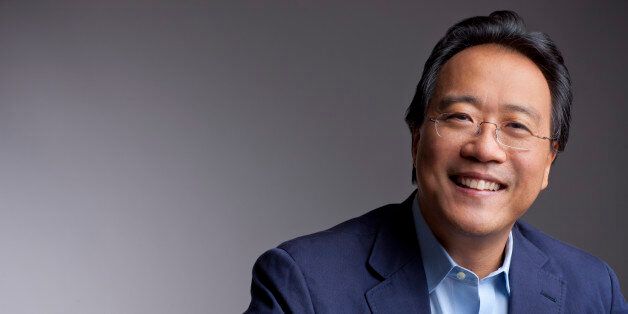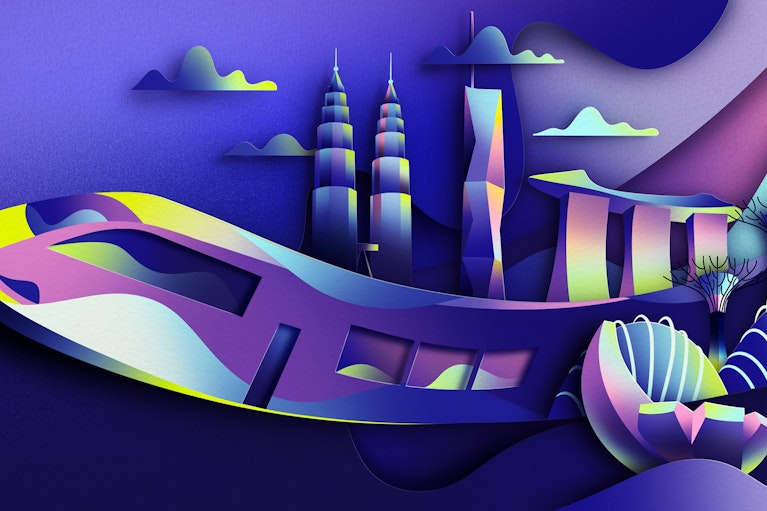Yo-Yo Ma reflects on the role of arts, creativity and the edges of life. His comments are adapted from a conversation with WorldPost.
In our highly interdependent global civilization, a lot of things are not working.
When I travel around the country and the world to perform, I pick up in my many conversations a growing sense that the first Enlightenment — which posited the rule of reason over emotion and feelings — is getting a little creaky, confining and even counterproductive.
The neurobiologist Antonio Damasio has written about Descartes’ error that, to put it in shorthand, “I think therefore I am.” Damasio instead makes the compelling argument, empirically based in neurology, that feeling and emotions as expressed in art and music play a central role in high-level cognitive reasoning.
Advances in neurobiology now make it clear that we humans have dual neural pathways, one for critical thinking and one for empathetic thinking. Only one pathway can be activated at a time, so when one is on, the other is off. Yet we are also aware that wise and balanced judgment results from integrating the critical and empathetic, taking emotions as well as reason into account. While this can’t be done it tandem, it does occur, we now know, through a loop-back process of layers of feedback.
These discoveries suggest that a new way of thinking is possible, a new consciousness — perhaps a new Enlightenment — that brings the arts and science back together.
This new consciousness by which we purposely seek to bolster the integrative feed-back loops of our dual neural pathways could provide a new energy for creativity in our weary civilization.
This integrative awareness is especially important today as our science-driven, technologically advanced world is breaking down into ever more compartments, specializations and disciplines — even as the interdependence of globalization is creating more links with other cultures through which empathetic understanding is vital.
To be able to put oneself in another’s shoes without prejudgment is an essential skill. Empathy comes when you understand something deeply through arts and literature and can thus make unexpected connections. These parallels bring you closer to things that would otherwise seem far away. Empathy is the ultimate quality that acknowledges our identity as members of one human family.
Visionaries like Elon Musk have spoken of the Internet and the planetary reach of the media as a “global thinking circuit.” We need to be sure that this connecting circuit is about communication and not just information by fostering both empathetic and critical thinking.
FROM STEM TO STEAM
Because the world economy is so hyper-competitive, much of the focus in education these days from Singapore to Shanghai to American schools is on STEM — science, technology, engineering and math. As important as that is, it is short-sighted. We need to add the empathetic reasoning of the arts to the mix — STEAM.
The values behind arts integration — collaboration, flexible thinking and disciplined imagination — lead to the capacity to innovate. A pianist skilled to both read and improvise music is open to listening to what is around him but knows that, to reach excellence, he needs to filter the imagination through the discipline of knowledge. When he performs, you will know instantly if he has achieved that right balance and it works or not.
For me the most proficient way to teach the values of collaboration, flexibility, imagination and innovation — all skill sets needed in today’s world — is through the performing arts. If you have these tools, you can do well in any field from software engineering to the biosciences.
Empathy is the other key tool. Empathy and imagination, the artificial layering of different realities, are linked. Empathy is your capacity to imagine what someone else is going through; what they are thinking, feeling and perceiving. That will not only give you an outlook on who they are — continually corrected by evidence — but also what your alternative possibilities are.
Empathetic thinking is something that is severely missing in education today that is only STEM oriented. Everyone wants innovation, recovering that inspired and innovative spirit of JFK talking about going to the moon. But you can’t skim the top without the rest of it.
The arts teach us that there is something that connects us all and is bigger than each of us. In both places it is a matter of equilibrium, of centering the ego at the right point of balance between the individual and the community.
We are all addressing the same issues with different names attached to them.
STEAM will help us get there by resolving the education problem. Kids will then go to school because it is a passion and a privilege, not a requirement.
IT’S ALL ABOUT EQUILIBRIUM
Finding meaning and living — all of what we do as humans in society — occurs in that brain space between life and death. In our industrial societies there is a great deal of controversy these days over what life is and when it begins and how we approach the agony of death which, in industrial society, we try to avoid thinking about. Therefore we spend an unbelievable amount of money on medical care in those last few years before dying.
The arts help us cope with these issues by engaging, not avoiding, the deep emotions of intimate loss involved and retelling over and over again the story of the human condition and its limits. Only then can we can regain our spiritual balance and find meaning in more than trying to technically manage every aspect of our being from womb to tomb.
NECESSARY EDGES
Equilibrium is what all life forms are seeking in order to survive. Evolution is the balance between stability and the changes necessary to cope with new challenges in the environment.
On this earth we can only survive within a very narrow bandwidth of conditions — oxygen, hydrogen, light, acidity, temperature.
Within that narrow bandwidth, most of what exists is concentrated in the middle. But, as we see in ecology, there are also “necessary edges.” The “edge effect” in ecology occurs at the border where two ecosystems — for example the savannah and forest — meet. At that interface, where there is the least density and the greatest diversity of life forms, each living thing can draw from the core of the two ecosystems. That is where new life forms emerge.
In our advanced species, we also have these “necessary edges.” The hard sciences are probing one far end of the bandwidth, searching for the origins of the universe or the secrets of the genome. People in the arts are probing the other far end of the bandwidth. Without the “necessary edges” that interface with a changing environment and find innovative response, the middle will go over the edge like lemmings. Those on the edge are, in effect, the scouts that say “there is a waterfall, there is a ledge, there is danger ahead. Stop. Don’t go this way, go that way.”
Equilibrium occurs when the information from the edges is available at the core. Only when those meridians or pathways that connect the edges to the middle are open will a life-form survive, and even prosper. Only when science and the arts, critical and empathetic reasoning, are linked to the mainstream will we find a sustainable balance in society.
What is dangerous is when the center ignores the edges or the edges ignore the center — art for arts sake or science without a humanist and societal perspective. Then we are headed for doomsday without knowing it.
GLOBALIZATION CREATES CULTURE
My musical journeys have reinforced this point of view. What I’ve found is that the interactions brought about by globalization don’t just destroy culture; they can create new culture and invigorate and spread traditions that have existed for ages precisely because of the “edge effect.” Sometimes the most interesting things happen at the edge. The intersections there can reveal unexpected connections.
Culture is a fabric composed of gifts from every corner of the world. One way of discovering the world is by digging deeply into its traditions.
I have often used this example: At the core of any cellist’s repertoire are the Cello Suites by Bach. At the heart of each suite is a dance movement called the sarabande.
The dance originated with music of the North African Berbers, where it was a slow, sensual dance. It next appeared in Spain, where it was banned because it was considered lewd and lascivious. Spaniards brought it to the Americas, but it also traveled on to France, where it became a courtly dance. In the 1720s, Bach incorporated the sarabande as a movement in his Cello Suites. Today, I play Bach, a Paris-born American musician of Chinese parentage. So who really owns the sarabande? Each culture has adopted the music, investing it with specific meaning, but each culture must share ownership: it belongs to us all.
In 1998, I founded the Silk Road Project to study the flow of ideas among the many cultures between the Mediterranean and the Pacific over several thousand years. When the Silk Road Ensemble performs, we try to bring much of the world together on one stage. Its members are a peer group of virtuosos, masters of living traditions, whether European, Arabic, Azeri, Armenian, Persian, Russian, Central Asian, Indian, Mongolian, Chinese, Korean or Japanese. They all generously share their knowledge and are curious and eager to learn about other forms of expression.
Over the last several years, we have found that every tradition is the result of successful invention. One of the best ways to ensure the survival of traditions is by organic evolution, using all the tools available to us in the present day, from YouTube to the concert hall.
WE ARE MORE THAN WE CAN MEASURE
We live in such a measuring society, people tend to put a person in a box they can put on their mental shelf. People think of me as a cellist because they can see my performances and take my measure as a musician. I think of my life as a musician as only the tip of an iceberg. That is only the audible part of my existence. Underneath the water is the life I’m leading, the thoughts I’m thinking and the emotions that well up in me.
We all get into trouble if we think the universe only exists of the matter that we can see and measure, and not the anti-matter that is the counterpart that holds it all together.
Michelangelo famously said, “I liberate the statue from the marble.” Similarly, my music emerges from the life all around me and the world we all share together. One is the condition of the other.




